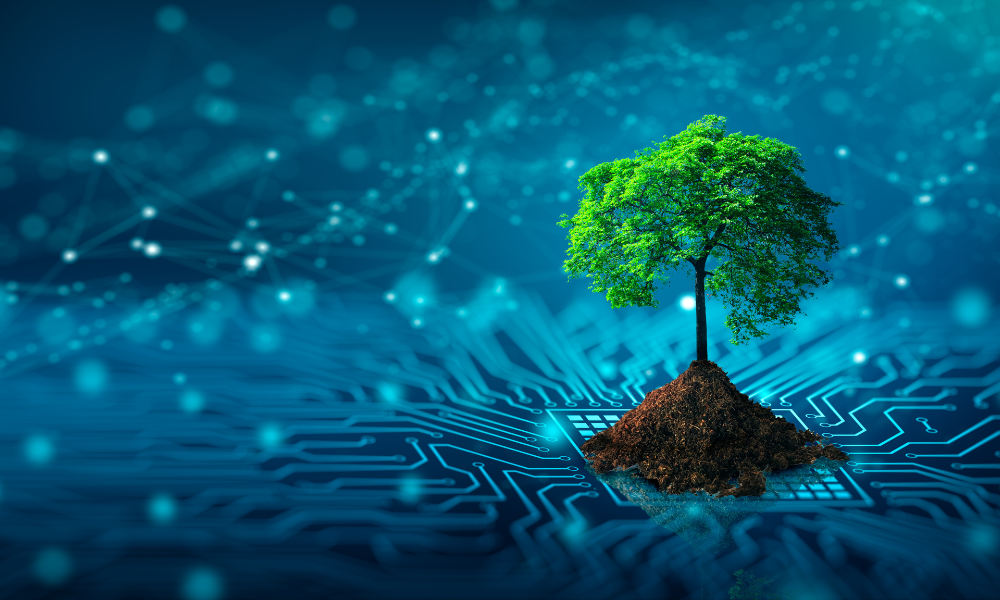They cost energy to run. They require rare resources to make. Being sustainable with your tech – otherwise known as “green IT” – is far from easy.
However, there are major benefits for organisations that put green IT at the heart of their tech strategy. For one, there is money to be saved – not to mention a certain very important planet.
Here’s a dive into why it’s so hard to be sustainable with your IT – and how to start going about it anyway:
The reasons why it’s hard to be sustainable with IT
1) Manufacturing depletes rare resources
Rare earth minerals are the common example here. These are rare resources that cannot currently be manufactured by other means. The five key minerals required by a great deal of modern technology are gallium, indium, lithium, silver, and tantalum.
Obviously, “one of a kind and cannot be created” is pretty much the definition of unsustainable.
2) Equipment lifecycle
Business hardware (and software) often wears out alarmingly quickly.
Improperly managed tech is even worse, resulting in equipment that causes more and more problems as it ages. This necessitates replacement before it would otherwise start to degrade in performance.
This costs businesses a lot of wasted money and is bad for the environment as more equipment is needed to replace failing tech.
3) Data centres
Data centres occasionally reach the mainstream news as one new journalist or another comes face-to-face with the huge inherent problems in the way the internet currently works.
A data centre is a building (or occasionally a part of a building) that hosts huge quantities of (generally) data storage technology. They require huge volumes of power to run and there are many concerns about the completely unsustainable nature of most current designs.
There are some signs of improvement. One big issue is how these centres are cooled. New or freshly applied technologies like liquid cooling and heat aisles may assist. So might the application of more reliable and sustainable energy sources.
There are also plans to build new data centres in a more sustainable way. Currently though, they are – as a rule – not great.
4) Electricity use
Tech uses electricity. Currently, there’s no way of getting around it. Comparatively new technologies like multicore processors can make computers more powerful without requiring more energy. Yet the baseline demand for electricity remains.
How to be more sustainable with IT
It’s easy to spot the reasons why tech is so problematic and green IT is hard. But there are certainly lots of things that you can do as a business leader to get started making your IT more sustainable:
1) Think about energy use
The major goal here is to switch to wholly renewable sources of energy. Somehow this is still well behind where we need to be, especially in the UK. Prioritising renewable energy suppliers though is definitely number one, but you can also:
- Use sleep mode more – the more you use sleep mode, the more devices you use it on, the more energy you save. The average energy saving is from 200 to just 8 watts for an average desktop computer. Make using sleep mode standard practice.
- Turn off devices more – what’s better than 8 watts? Zero watts. If technology is not in use, turn it off to save energy (and money). Power strips and adaptors are often pointed to as an easy way to do this as they allow you to turn off multiple devices all at once.
- Choose energy-efficient equipment – make energy efficiency one of your decision-making factors when choosing new tech for your workplace. Lower energy consumption is good for the planet and for your bottom line too.
2) Go paperless
Few businesses these days have a real need to print much out on paper unless to meet the personal preferences of individuals.
Today, your entire workflow can be digital. Microsoft 365, Google Workspace, and other collaboration tools make working together easy no matter where your team is based. No paper required.
Going paperless is part of phase one for most businesses trying to go green with their IT, remembering that:
- Files can be stored in the cloud rather than on in-office servers (or filing cabinets!)
- You can take notes on devices like tablets and presentations don’t need to be printed (use a screen)
- If you absolutely must print, print on both sides (the savings this tiny measure makes for major companies is truly ludicrous)
3) Recycle old office equipment
You’ll likely have heard about how problematic e-waste (as it’s called) is becoming. This means taking a careful look at what we do with old office equipment:
- Can it be reused or repurposed somewhere else within your organisation?
- Can you donate it to a non-profit or other organisation that would value it?
- Can you recycle it at a specialist centre or find a “take back” program?
Get help going green with your IT
All in all, achieving green IT is tough. But there are measures you can take to get started that will end up saving you money rather than the reverse.
If you need a little expert advice on where to start, Dial A Geek has already helped nearly 1000 businesses in Bristol and beyond improve their use of IT.
Get a FREE, no-commitment consultation with Chief Geek Gildas Jones today to talk through where your business IT is and where you want to be.

